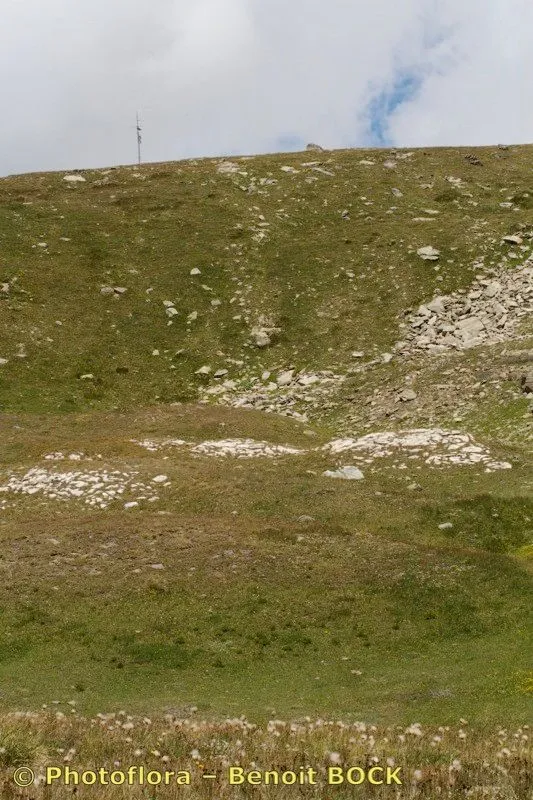
Author: All.
Bibliography: Fl. Pedem. 2: 264 (1785)
Year: 1785
Status: accepted
Rank: species
Genus: Carex
Vegetable: False
Observations: Temp. & Subarctic Northern Hemisphere
Curly sedge, known scientifically as Carex rupestris, is a perennial plant commonly seen in temperate and subarctic regions of the Northern Hemisphere. A hardy species, it is well-adapted to thrive in these cooler climates, often found in habitats that include rocky outcrops, alpine meadows, and tundra environments where other vegetation may struggle.
Carex rupestris is a member of the Cyperaceae family, a large group of grass-like plants found all over the world. This family is recognized for its ecological importance, particularly in wetland habitats, where its members contribute to soil stability and water quality.
The plant was first scientifically described and classified by Carlo Allioni in 1785, an achievement recorded in his seminal work, “Flora Pedemontana” (Volume 2, page 264). Allioni’s work provided a comprehensive survey of the flora in the Piedmont region, and his classification of Carex rupestris has stood the test of time, with the plant retaining its original nomenclature over centuries.
Characteristics of curly sedge include its distinctive, tufted growth form with narrow, curling leaves that give the plant its common name. These curling leaves help reduce moisture loss, an adaptation that allows the plant to survive in the often harsh, wind-exposed conditions of its native habitats. The species produces small, inconspicuous flowers that are typical of the sedge family, primarily pollinated by the wind.
Curly sedge is not only intriguing for its resilience and ecological role but also for its aesthetic appeal in naturalistic garden settings and restoration projects. Its ability to stabilize soil and endure varying degrees of cold and minimal nutrient availability makes it an excellent candidate for ecological conservation efforts, especially in regions facing climate change impacts.
Exploring the diverse habitats of the Northern Hemisphere, one can appreciate the subtle yet critical presence of Carex rupestris. This unassuming plant is a testament to nature’s intricate balance and the evolutionary marvel of adaptation.
Deu: felsen-segge
Nob: bergstarr
Nno: bergstorr
Eng: curly sedge, rock sedge
Swe: kalliosara, klippstarr
Fin: kalliosara
Pol: turzyca skalna
Fra: carex des rochers, laiche des rochers
Cym: hesg y graig, hesgen y graig
En: Curly sedge, ROCK SEDGE
Bg: Скална острица
Ca: Càrex rupestre
Cs: Ostřice skalní
Fi: Kalliosara
Fr: Carex des rochers, Laiche des rochers, Laîche des rochers
De: Felsen-Segge
Is: Móastör
It: Carice delle creste
Nb: Bergstarr
Nn: Bergstorr
Pl: Turzyca skalna
Ru: Осока скальная
Sv: Klippstarr, Kalliosara
Uk: Осока скельна
Cy: Hesgen y graig, Hesg y Graig
Taken Jul 15, 2012 by Photoflora – Benoit BOCK (©)
Taken Jul 15, 2012 by Photoflora – Benoit BOCK (©)
Taken Jul 15, 2012 by Photoflora – Benoit BOCK (©)
Taken Jan 1, 1900 by EOL − Encyclopedia of Life (cc-by-nc)
Taken Jan 1, 1900 by EOL − Encyclopedia of Life (cc-by-nc)
Taken Jul 15, 2012 by Photoflora – Benoit BOCK (©)
Taken Jul 15, 2005 by Photoflora – Benoit BOCK (©)
Taken Jul 15, 2012 by Photoflora – Benoit BOCK (©)
Taken Jan 1, 1900 by EOL − Encyclopedia of Life (cc-by-nc)
Taken Jan 1, 1900 by EOL − Encyclopedia of Life (cc-by-nc)
Taken Jun 14, 2022 by Fabien Anthelme (cc-by-sa)
Taken Jun 12, 2018 by Fabien Anthelme (cc-by-sa)
Taken May 28, 2018 by Javorko Javorčič (cc-by-sa)
Taken Jul 15, 2005 by Photoflora – Jean-Luc TASSET (©)
Taken Jul 15, 2014 by Photoflora – Jean-Luc TASSET (©)
Taken Oct 7, 2021 by Fabien Anthelme (cc-by-sa)
Taken Jun 14, 2022 by Fabien Anthelme (cc-by-sa)
Taken Jun 12, 2018 by Fabien Anthelme (cc-by-sa)
Taken Jun 14, 2022 by Fabien Anthelme (cc-by-sa)
Taken Jul 15, 2017 by Photoflora – Benoit BOCK (©)
Taken Jul 15, 2012 by Photoflora – Benoit BOCK (©)
Taken Jul 15, 2012 by Photoflora – Benoit BOCK (©)
Taken Jul 15, 2012 by Photoflora – Benoit BOCK (©)
Taken Jan 1, 1970 by Photoflora – L’Abbé COSTE (©)
© copyright of the Board of Trustees of the Royal Botanic Gardens, Kew.
Taken Jul 15, 2012 by Photoflora – Benoit BOCK (©)
Taken Jul 15, 2012 by Photoflora – Benoit BOCK (©)
Growth habit: Graminoid
Ph maximum: 7.0
Ph minimum: 6.5
Light: 9
Atmospheric humidity: 4
Bloom months: [‘jul’, ‘aug’]
Soil nutriments: 2
Family: Myrtaceae Author: (F.Muell.) K.D.Hill & L.A.S.Johnson Bibliography: Telopea 6: 402 (1995) Year: 1995 Status:…
Family: Rubiaceae Author: Pierre ex A.Froehner Bibliography: Notizbl. Bot. Gart. Berlin-Dahlem 1: 237 (1897) Year:…
Family: Sapindaceae Author: Koidz. Bibliography: J. Coll. Sci. Imp. Univ. Tokyo 32(1): 38 (1911) Year:…
Family: Asteraceae Author: A.Gray Bibliography: Pacif. Railr. Rep.: 107 (1857) Year: 1857 Status: accepted Rank:…
Family: Fabaceae Author: Medik. Bibliography: Vorles. Churpfälz. Phys.-Ökon. Ges. 2: 398 (1787) Year: 1787 Status:…
Family: Aspleniaceae Author: (Cav.) Alston Bibliography: Bull. Misc. Inform. Kew 1932: 309 (1932) Year: 1932…